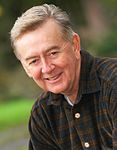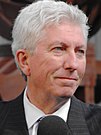Canadian federal election, 1997
|
|
||||||||||||||||||||||||||||||||||||||||||||||||||||||||||||||||||||||||||||||||||||||||||||||||
|---|---|---|---|---|---|---|---|---|---|---|---|---|---|---|---|---|---|---|---|---|---|---|---|---|---|---|---|---|---|---|---|---|---|---|---|---|---|---|---|---|---|---|---|---|---|---|---|---|---|---|---|---|---|---|---|---|---|---|---|---|---|---|---|---|---|---|---|---|---|---|---|---|---|---|---|---|---|---|---|---|---|---|---|---|---|---|---|---|---|---|---|---|---|---|---|---|
|
||||||||||||||||||||||||||||||||||||||||||||||||||||||||||||||||||||||||||||||||||||||||||||||||
|
|
||||||||||||||||||||||||||||||||||||||||||||||||||||||||||||||||||||||||||||||||||||||||||||||||
|
301 seats in the 36th Canadian Parliament 151 seats needed for a majority |
||||||||||||||||||||||||||||||||||||||||||||||||||||||||||||||||||||||||||||||||||||||||||||||||
| Turnout | 67.0% ( |
|||||||||||||||||||||||||||||||||||||||||||||||||||||||||||||||||||||||||||||||||||||||||||||||
|
||||||||||||||||||||||||||||||||||||||||||||||||||||||||||||||||||||||||||||||||||||||||||||||||

Popular vote by province, with graphs indicating the number of seats won. As this is an FPTP election, seat totals are not determined by popular vote by province but instead via results by each riding.
|
||||||||||||||||||||||||||||||||||||||||||||||||||||||||||||||||||||||||||||||||||||||||||||||||
|
||||||||||||||||||||||||||||||||||||||||||||||||||||||||||||||||||||||||||||||||||||||||||||||||
Jean Chrétien
Liberal
The Canadian federal election of 1997 was held on June 2 to elect members of the Canadian House of Commons of the 36th Parliament of Canada. Prime Minister Jean Chrétien's Liberal Party of Canada won a second majority government. The Reform Party of Canada replaced the Bloc Québécois as the Official Opposition.
The election results closely followed the pattern of the 1993 election. The Liberals swept Ontario, while a divided Bloc managed to win a reduced majority in Quebec. Reform made sufficient gains in the West to allow Preston Manning to become Leader of the Official Opposition, but lost its only seat east of Manitoba. The most significant change was major gains in Atlantic Canada by the New Democratic Party (NDP) and the Progressive Conservative Party of Canada. The Liberals faced major losses, including two cabinet ministers; David Dingwall, Minister of Public Works from Nova Scotia, and Doug Young, Minister of National Defence from New Brunswick, both of whom lost to NDP candidates.
...
Wikipedia





